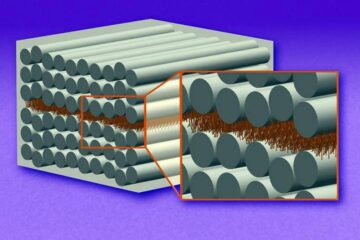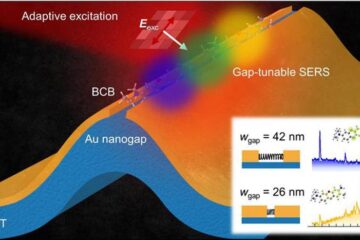E. coli waves the Blue Flag for our beaches

E. coli, the bug made famous by food poisoning outbreaks, can be used to point the finger of blame at the right culprit when our waterways become polluted. E. coli live in the guts of animals and are already used to indicate whether food and water are contaminated with faecal material. However, according to a recent article in the August 2004 issue of Microbiology Today, the quarterly magazine of the Society for General Microbiology, this work can be extended to use the bugs to detect and find the source of the pollution.
Researchers at the University of Lancaster isolated E. coli bacteria from all the likely sources of pollution (cattle, sheep, donkeys, wild birds, dogs and humans) and then ‘fingerprinted’ the DNA from each isolate to form a unique bar code. The bar codes were all stored in a searchable computer library, which is used to match new samples from contaminated sites.
“This should help to identify sources, prevent contamination and improve health”, explains Dr Keith Jones from the University of Lancaster. “If you isolate E. coli from a contaminated environment it is possible to match the DNA fingerprint with that from different animals in the library. This then tells you which animal sources are responsible for that pollution.”
A recent finding showed that pollution of a beach in Northwest England was not due to contamination from human sewage, as thought, but from seabird droppings.
In the laboratory E. coli has long been associated with advancing research in cell and molecular biology and this issue of Microbiology Today explores some of the many aspects of E. coli, from the friend to the foe. Thanks to genomics, scientists now understand why some strains of E. coli are harmless, whilst others are deadly. For example, E. coli O157:H7 was made infamous due to a fatal outbreak in Scotland in 1996, whilst other strains, such as E. coli K-12, the most well studied bacterium in science, have contributed enormously to our understanding of how cells work.
Other features in the August 2004 issue of Microbiology Today include:
·Escherichia coli: model and menace (page 114)
·The history of E. coli K-12 (page 116)
·Diarrhoeal disease in the UK (page 117)
·E. coli as a probiotic (page 119)
·Comparative genomics (page 124)
·Getting to the bottom of the burger bug (page 126)
These are just some of the articles that appear, together with all the regular features and reports of Society activities.
Media Contact
More Information:
http://www.sgm.ac.ukAll latest news from the category: Life Sciences and Chemistry
Articles and reports from the Life Sciences and chemistry area deal with applied and basic research into modern biology, chemistry and human medicine.
Valuable information can be found on a range of life sciences fields including bacteriology, biochemistry, bionics, bioinformatics, biophysics, biotechnology, genetics, geobotany, human biology, marine biology, microbiology, molecular biology, cellular biology, zoology, bioinorganic chemistry, microchemistry and environmental chemistry.
Newest articles

“Nanostitches” enable lighter and tougher composite materials
In research that may lead to next-generation airplanes and spacecraft, MIT engineers used carbon nanotubes to prevent cracking in multilayered composites. To save on fuel and reduce aircraft emissions, engineers…

Trash to treasure
Researchers turn metal waste into catalyst for hydrogen. Scientists have found a way to transform metal waste into a highly efficient catalyst to make hydrogen from water, a discovery that…

Real-time detection of infectious disease viruses
… by searching for molecular fingerprinting. A research team consisting of Professor Kyoung-Duck Park and Taeyoung Moon and Huitae Joo, PhD candidates, from the Department of Physics at Pohang University…





















